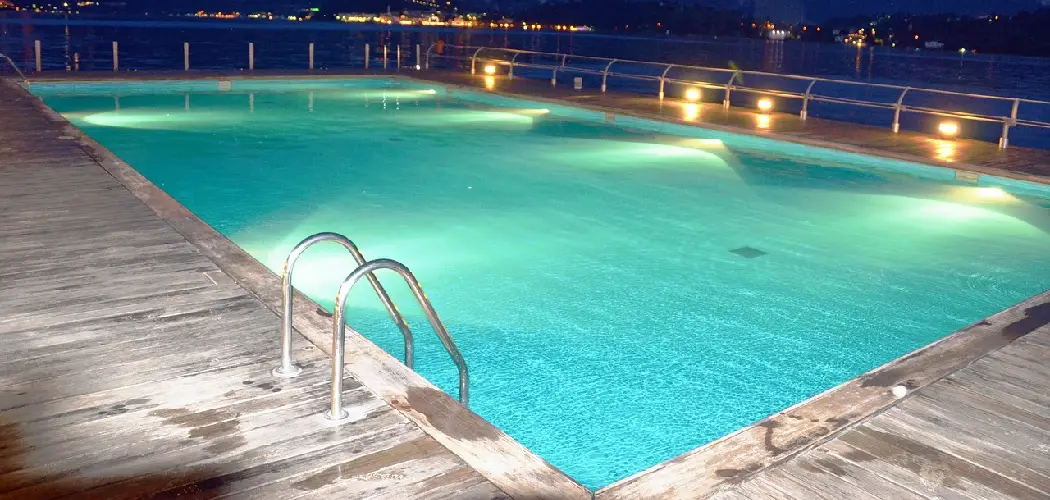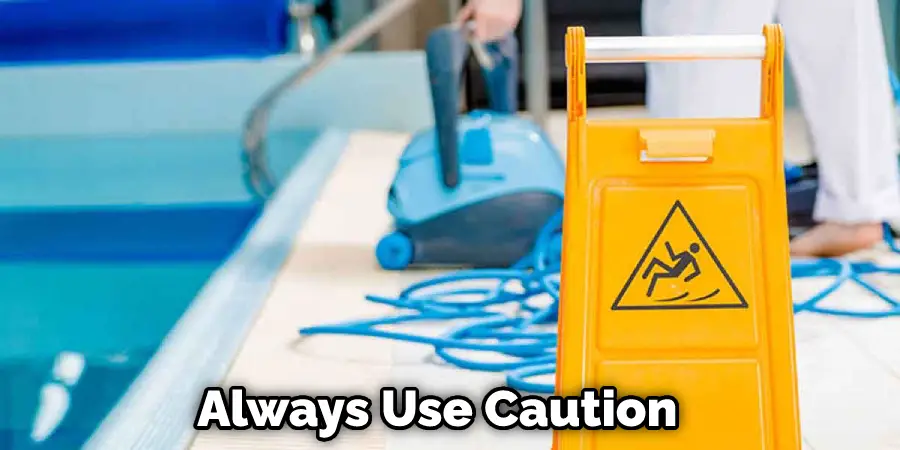If you’re looking to add a little bit of fun and excitement to your pool, installing a nicheless pool light is a great way to do it! It will make your pool look amazing at night, but it can also provide a practical lighting solution for evening swims. This article will show you how to install a nicheless pool light in your swimming pool. Follow these simple steps, and you’ll have your new light up and running in no time!
Summary: Installing a nicheless pool light is an effective way to enhance your pool’s ambiance and safety without the need for a traditional light niche. Nicheless lights are low-profile, flush-mounted fixtures that can be installed directly into the pool wall. Begin by gathering the necessary tools and materials, such as a drill, screwdriver, conduit, and silicone sealant. Carefully read the manufacturer’s instructions for the specific nicheless light you’ve chosen, as installation requirements may vary between models.
Select the desired location for the nicheless pool light, ensuring that it is compatible with the light’s specifications and any local regulations or guidelines. This typically involves choosing a spot on the pool wall where the light can be easily seen but is not obstructed by ladders, steps, or other pool features. Once the location is determined, drill a hole into the pool wall according to the manufacturer’s instructions. Install the conduit that will house the light’s wiring, running it from the hole in the pool wall to the junction box or power source.
Feed the light’s wiring through the conduit and secure the fixture to the pool wall using the provided hardware, ensuring that it is flush with the wall’s surface. Apply silicone sealant around the light fixture to create a watertight seal, preventing water from entering the conduit or damaging the electrical connections. After the sealant has cured, connect the wiring to the junction box or power source, following the manufacturer’s instructions and any applicable electrical codes. Once the installation is complete, test the nicheless pool light to ensure it is functioning properly and illuminating the pool as desired.
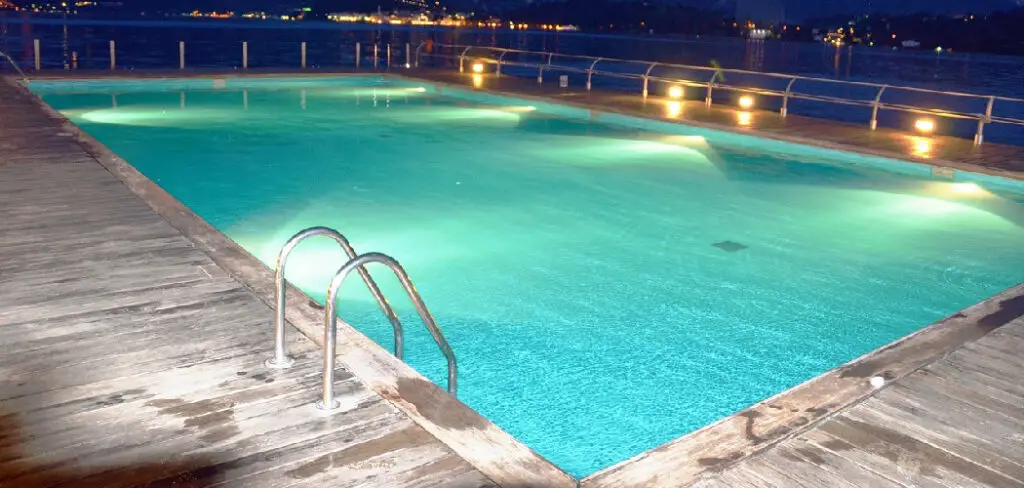
If you’re looking for an easy way to add some extra light to your backyard pool, check out our guide on installing a nicheless pool light. This affordable and easy installation allows you to customize the light to fit your specific needs, making it the perfect addition to your pool area.
Swimming pool lights come in various shapes and sizes, but the most common type is the nicheless light. A nicheless light is a pool light that doesn’t require a specific niche or waterproof enclosure to be installed. This makes them an excellent option for pools that don’t have any pre-existing niches or for pools that need a new light installed in a different location.
What Is a Nicheless Pool Light
Nicheless pool lights are a great option for those looking for an easy to install pool light. These lights don’t require housing or a niche, making them much simpler to install than traditional pool lights. Nicheless pool lights are available in both LED and incandescent models, so you can choose the option that best suits your needs.
Features of Nicheless LED Pool Light
- Nicheless design – this means there is no need to cut a hole in your pool wall, which can be difficult and time-consuming
- Low profile – the light is just 1.5″ thick, so it will not disturb your swimming experience
- Easy installation – a simple plug and play design means you can have your light up and running in minutes
- Low voltage – operates on 12 volts, so it is safe and energy-efficient
- Super bright – the light emits up to 50,000 lumens so that you can enjoy your pool even at night
- Durable – the light is made of high-quality materials that are designed to withstand the elements
If you are looking for a way to add some extra light to your pool without going through the hassle of installing a traditional light, then a nicheless LED pool light is the perfect solution. These lights are easy to install, super-bright, and energy-efficient to enjoy your pool day or night.
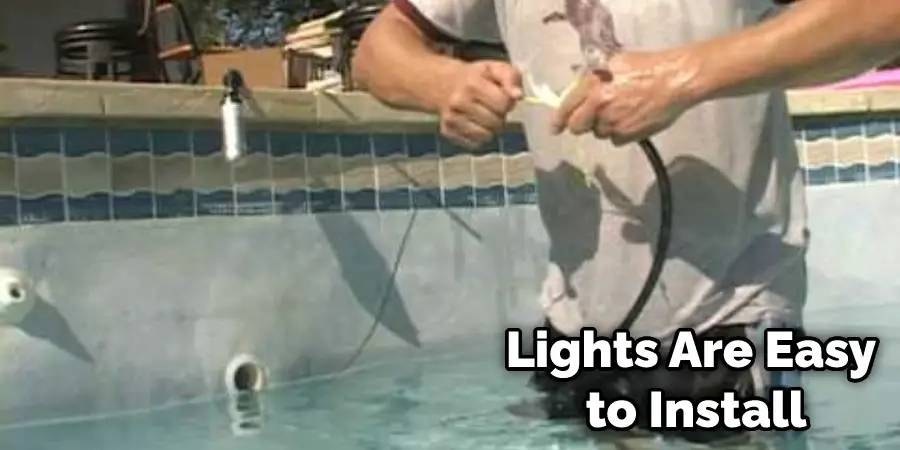
Technical Details of Nicheless LED Pool Light:
Energy Efficient
LED lights are far more energy-efficient than incandescent lights, using only a tenth of the electricity. So, if your current pool light is a 100-watt incandescent, you can replace it with a 10-watt LED and see an immediate 90% reduction in your energy usage.
Long Life
LEDs are long-lasting lights that can last for up to 50,000 hours. This means that once you install new LED pool lights, you likely won’t have to worry about changing them for at least five years.
Better Light Quality
One of the best advantages of LED pool lights is the improved light quality. Nicheless LEDs emit a bright, white light that is much clearer and sharper than the yellowish light of incandescent bulbs. This will make your pool water look more inviting, and it will also make it easier to see if there are any objects in the water that need to be removed.
Good Overall Lighting
It’s important to have a well-lit pool so that it’s more inviting and safer. With LED pool lights, you can have a consistent lighting level throughout the pool area. This will make it easier to see if someone is in trouble and need help, and it will also deter criminals from using your pool as a hiding place.
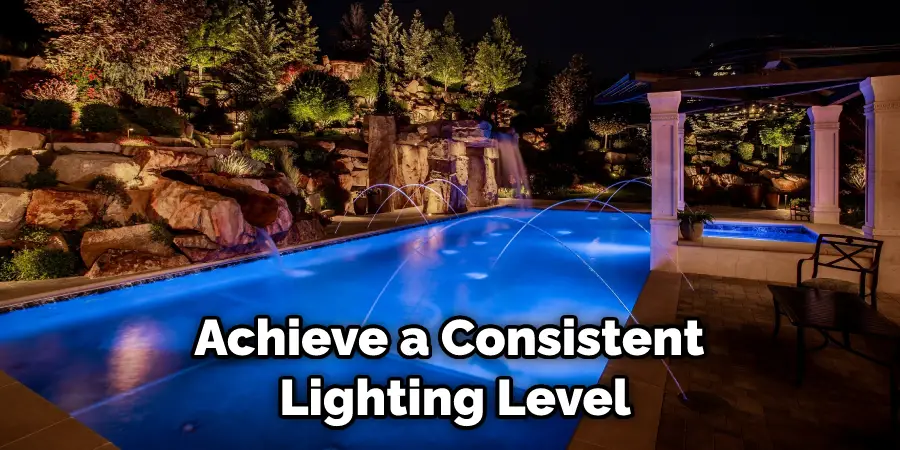
GroundFree and BondFree
One of the best things about LED nicheless pool lights is that they are ground-free and bond free. This means that you can install them yourself without hiring a contractor, and you also don’t need to worry about any electrical shorts or other safety hazards.
So if you’re looking for an energy-efficient, long-lasting, and high-quality light for your pool, consider upgrading to an LED nicheless light. You won’t be disappointed!
What You’ll Need
- Flathead Screwdriver
- Phillips Screwdriver
- Measuring Tape
- Level
- Drill
- 3/4″ hole saw or spade bit (for masonry pools only)
- 1/2″ NPT conduit nipple and locknut (if running wires through conduit)
- Wire Connectors (if not using pre-wired light)
A Step by Step Guide on How to Install a Nicheless Pool Light
Step 1: Determine the Voltage
Before you buy a pool light, you need to figure out how much voltage it uses. You can find this information on the light itself or in the owner’s manual. Most lights use 120 volts, but there are also 24-volt and 277-volt lights available.
Step 2: Choose the Location of the Light
Once you have determined the voltage, it is time to choose the location of the light. The best place to install a pool light is usually at one end of the pool near the deep end. First, measure the distance from where you want to install the light to the nearest GFCI outlet. If there is no existing outlet near the desired location, you will need to install an outdoor outlet box.
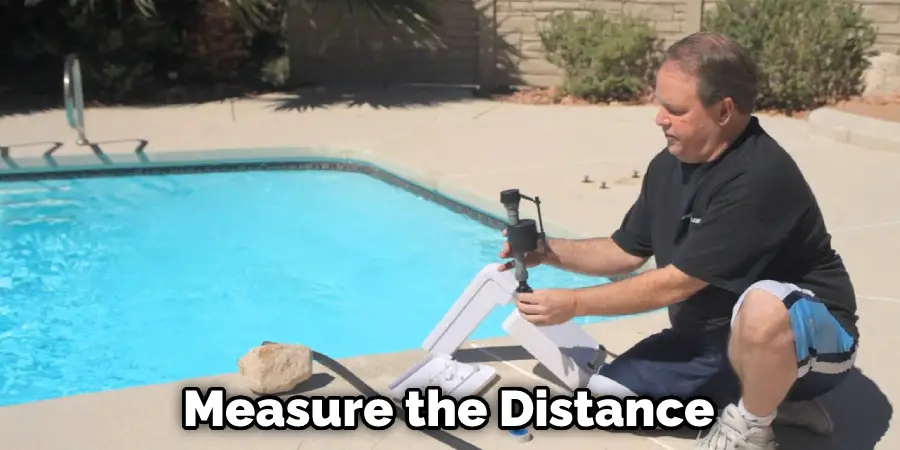
Step 3: Cut the Hole for the Light
If you install the light in a vinyl liner pool, you will need to use a hole saw or spade bit to cut a hole in the liner. You will need to use a 3/4″ hole saw or spade bit for concrete pools. Be sure to wear eye protection when cutting holes in either type of pool.
Step 4: Install the Eyeball Return Fitting
Once the hole has been cut, it is time to install the eyeball return fitting. Start by screwing the locknut onto the threads of the fitting. Then, insert the fitting into the hole and hand-tighten the locknut. Next, use a wrench to tighten the locknut two or three turns. After the locknut has been tightened, screw the eyeball return into the fitting. Make sure to hand-tighten this piece. Next, use a wrench to finish tightening it. After the eyeball return is tight, turn on the water and check for leaks.
Step 5: Connect the Wires
If you are using a pre-wired light, there is no need to do anything else in this step. If you are not using a pre-wired light, it is time to connect the wires. The black wire will go to the hot side of the light, and the white wire will go to the neutral side of the light. Strip about 1/2″ of insulation from each wire and twist them together. Use a wire connector to attach the cables securely.
Step 6: Install the Light
Now it is time to install the light. Start by screwing the locknut onto the threads of the light housing. Then, insert the light into the eyeball return fitting and hand-tighten the locknut. Next, use a wrench to tighten the locknut two or three turns.

Step 7: Test the Light
After the light has been installed, it is time to test it. First, turn on the power to the light at the breaker box and use a pool brush to push the button on the light. The light should turn on. If it does not, check the wires to make sure they are connected correctly.
Step 8: Install the Faceplate
Once you have confirmed that the light is working, it is time to install the faceplate. Start by screwing the locknut onto the threads of the faceplate. Then, insert the faceplate into the hole and hand-tighten the locknut. Next, use a wrench to tighten the locknut two or three turns.
Step 9: Clean Up
Now that the light is installed, it is time to clean up. Start by removing any tools or materials you used during the installation process. Then, sweep up any debris created when cutting the hole for the light. Be sure to dispose of all debris safely. Congratulations! You have successfully installed a nicheless pool light. These steps will help in how to install a nicheless pool light.
Tips and Warnings
Tips:
- If you are planning to install a nicheless pool light, it is essential to make sure that the light will be able to fit into the opening of the pool. In addition, you may need to get a light with a smaller diameter than what is currently available on the market.
- Always use caution when working around water, especially if you are not familiar with swimming pool maintenance and repairs.

- Ensure that the power is turned off before beginning any installation work.
- Following the manufacturer’s instructions is essential for proper installation.
- If you are not comfortable installing the light yourself, ask a qualified professional to do it for you.
Warnings:
- Never work on a pool light if it is wet.
- Do not touch the bulb with your bare hands.
- Be careful when handling electrical wiring.
Where Should Lights Be Placed in a Pool
Proper lighting in a pool is essential for both safety and aesthetic reasons. Poorly lit pools can be dangerous, as it can be difficult to see potential hazards. Additionally, poorly lit pools can look uninviting and even gloomy. Therefore, it is important to consider where to place lights in a pool carefully.
There are a few things to keep in mind when deciding where to place lights in a pool. First, it is essential to ensure that the lights provide adequate coverage of the entire pool. Second, the lights should be placed to minimize glare and maximize light distribution. Finally, it is also essential to consider the aesthetics of the lighting setup.
With these factors in mind, there are a few general guidelines for where to place lights in a pool. First, the lights should be placed around the perimeter of the pool. This will ensure that the entire pool is adequately lit. Second, the lights should be placed at different depths throughout the pool. This will help create a more even distribution of light and minimize glare. Finally, it is also important to consider placing lights near steps, ledges, and other features that might be difficult to see in low lighting conditions.
Nicheless Lighting Ideas for Pools and Spas
- Underwater LED lights: Add a pop of color to your pool and spa with underwater LED lights. They come in various colors and can be used to create a fun, vibrant ambiance for your pool and spa area.
- Solar-powered lights: If you are looking for an eco-friendly lighting solution, solar-powered lights are a great option for your pool and spa area. They are easy to install, don’t require any wiring, and are powered by the sun.
- Floating lights: Floating lights are a fun and unique way to add lighting to your pool and spa. They come in various shapes and sizes and can be used to create interesting patterns and designs on the water’s surface.
- Rope lights: Rope lights are versatile lighting options that can be used to create a soft ambient glow around your pool and spa area. They are easy to install and can be wrapped around trees, posts, or other structures.
- Lanterns: Lanterns are timeless lighting fixtures that can add a touch of elegance and sophistication to your pool and spa area. They come in various styles and can be hung from trees, placed on tables, or placed on the ground.
- Step lights: Step lights are a practical lighting solution that can be used to illuminate steps and other areas around your pool and spa. They help increase safety by providing better visibility in low-light conditions.
- Wall sconces: Wall sconces are a great way to add lighting to your pool and spa area without taking up too much space. They can be mounted on walls or pillars and come in various styles that can complement your outdoor décor.
Frequently Asked Questions
What Is a Nicheless Pool Light?
A nicheless pool light is a type of lighting that doesn’t require a custom or specific placement in order to produce the desired effect. This makes it a popular choice for landscape architects, interior designers, and others who need versatile lighting solutions for their projects.
The downside to this type of light is that it isn’t as bright as traditional pool lights and may not be suitable if you are looking to create an intense swimming environment. However, these lights can be used sparingly to add subtle ambiance or accentuate special features in your patio or garden area.
In terms of price, they tend to range from affordable options that are easy on your wallet all the way up to more expensive models with higher output levels and wider beam angles. So whether you’re starting out shopping for your first nicheless pool light or just want an upgraded solution, there’s a model available that’s perfect for you!
Can You Get Electrocuted by a Pool Light?
You can get electrocuted by a pool light. Pool lights are typically made of metal and when they contact water they create an electrical current. When these currents flow through your body, they can cause serious damage, including cardiac arrest. If you or someone in your family swims regularly at a pool that uses fluorescent and/or incandescent lighting, it is important to be aware of the risks and take appropriate precautions to avoid getting electrocuted.
Does a Pool Light Need to Be Bonded?
A pool light needs to be bonded in order to prevent potential electrical shock. This is because pool lights are often plugged into an outlet that supplies power to other locations in your home, including the kitchen and living room. If there was ever a problem with the wiring within the pool light itself, this could lead to interference and potentially dangerous conditions. By bonding the light fixture, you can ensure that all of its circuitry is protected and maintained properly.
Do You Have to Drain Pool to Replace Pool Light?
This is a common misconception that is likely due to the fact that pool lights are often plugged into an electrical outlet, and when the pool is drained, the electric lines that run through the pool are also drained. However, this isn’t the case – pool lights operate off of a battery, and when the battery dies, the light goes out. Replacing a pool light simply requires changing the battery.
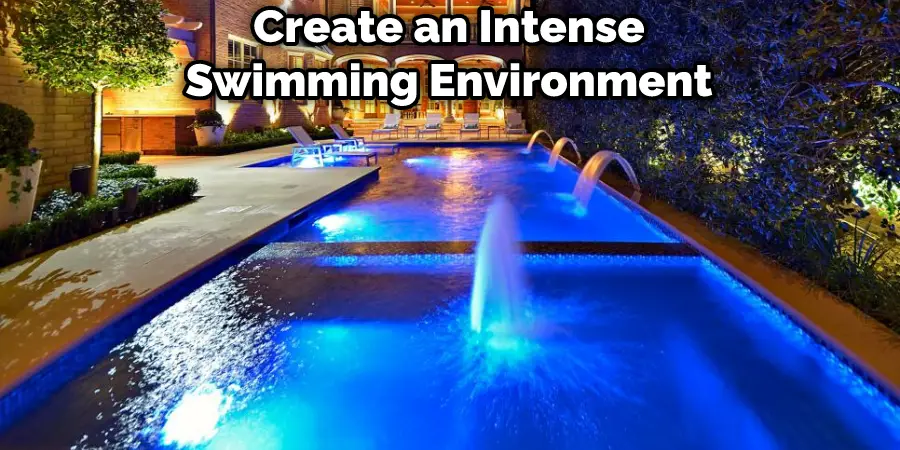
Conclusion
Installing a nicheless pool light is an easy process that can be completed in less than 30 minutes. With just a few essential tools, you can have your pool looking great for swimming and diving. Follow the manufacturer’s instructions closely to avoid any potential problems. We hope you find this article on how to install a nicheless pool light helpful. Then, have fun with your new pool light!
You Can Check It Out To Install Nilight Light Bar
